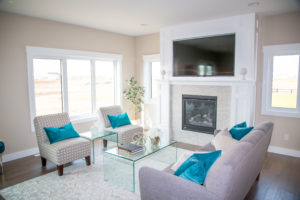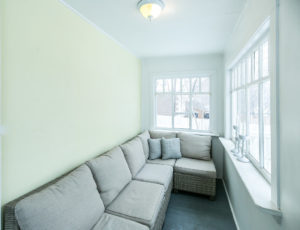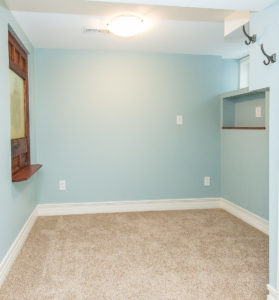Spring has sprung (maybe not as wholly as we’d like in the prairies, but it’ll come), and that means it’s time for change.
 In this three-part series, we are going to dissect the colours you should consider when piecing together rooms, using cardinal direction as our main criteria. We’ll make our way through the diurnal cycle, from the start of the day, to the end. That means we’re going to start with that morning light, and how best to paint those east-facing rooms!
In this three-part series, we are going to dissect the colours you should consider when piecing together rooms, using cardinal direction as our main criteria. We’ll make our way through the diurnal cycle, from the start of the day, to the end. That means we’re going to start with that morning light, and how best to paint those east-facing rooms!
(Disclaimer: the photos shown reflect similar values, and don’t necessarily speak to the correct time of day or facing for the scenario mentioned!)
Let’s start with some all-important, all-encompassing questions that you need to ask every time you want to change the scheme of a windowed room:
First: When are you in the room? Are you there most often in the morning, the evening, or both? When will the room’s atmosphere most apply to you?
Second: How much natural light enters the space year-round? Remember: the amount of sun you get changes across the seasons; in the northern hemisphere, the sun doesn’t rise nearly as high in the sky.
Third: How much artificial light is necessary in the room to compensate? How often is that artificial light turned on?
And now, for some application!
We’ll describe these in three potential sets: warm, neutral, and cool.
If you’re in an east-facing room in the morning, that means you’ll likely be seeing some sunlight streaming on through; if your windows are the primary source of light in the space, you’ll be faced with a whole lot of stark shadows right out of the gate. This can create some sharp contrasts. As the day progresses, light wanes away from the sharpness, but maintains brightness through most of our months in the mid-latitudes. When the sun passes over your home and into the west, the room will fall to a cooler temperament, with shadow abounds.
Verdict: Neutral-Cool. Mauve, Avocado, Sky Blue. Avoid going with a cool colour that speaks to a lot of grey tones, as that can start to feel dull by the late hours of the day. A cool colour handles the early-morning shadows with grace, and pulls some of the attention away from the warm tone the sun provides at that hour, which helps keep a relaxing atmosphere for your room.
These examples here (a verandah statement wall and a basement bedroom) fit the bill; most staged homes trend to neutral tones, which works just fine, too.
Stay tuned to our blog as we continue this series on Facing Facts about Colour!




